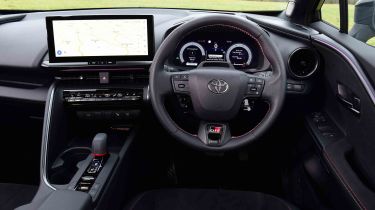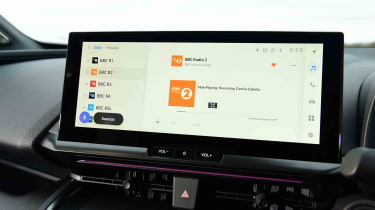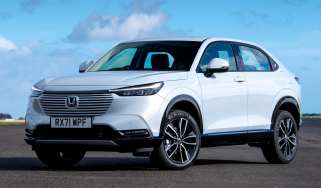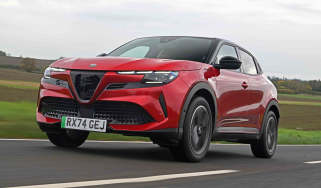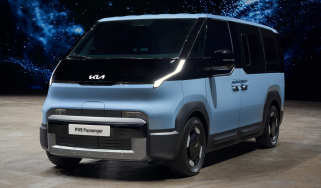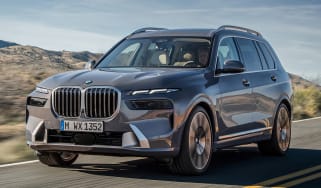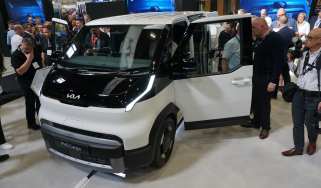Toyota C-HR - Interior, design & technology
We reckon the Toyota C-HR sports one of the brand’s best interiors: infotainment is leagues better than its predecessor

Credit should be given to the designers at Toyota for not playing it safe and watering down the striking looks of the original C-HR. Instead, the latest C-HR looks even more arresting than before, with the GR Sport model coming as standard in two-tone paint to really show off the looks in the best light.
Other trim levels can be had with a contrasting roof colour for an additional £350. There’s one free Pure White colour, four metallic colours that can be optioned with a ‘Bi-Tone’ contrast roof, and two premium colours – although the latter can cost nearly £1,300 when specced in two-tone form.
Inside, Toyota hasn’t deviated much from the stylised formula that made the first C-HR such a success. There’s a fully digital instrument panel, a whopping 12.3-inch infotainment system touchscreen in higher-spec models (lesser C-HRs make do with an eight-inch display), and wireless smartphone integration.
Quality plastics and thick padding are in all of the key areas of the interior, while sensibly positioned toggle controls in the centre of the dash govern the ventilation system and heated seats. We prefer having actual, physical controls because they’re easier to use on the move compared with the purely touchscreen-based systems used in the DS3 and Peugeot 2008, which can be very distracting because you have to look away from the road to find the right area of the screen to press.
Sat-nav, stereo and infotainment
The entry-level Icon C-HR has a smaller 8.0-inch screen, while everything from Design trim and above gets the larger 12.3-inch screen we’ve tried in other Toyota cars, including the Toyota bZ4X.
The previous C-HR had an outdated-looking infotainment setup. The latest screen is much improved, not just in terms of layout but also in terms of the speed of its responses. However, it still can’t quite match the highly impressive infotainment system featured in the Hyundai Kona, which is faster still.
A wireless charging pad comes as standard on mid-range Design trim cars, as well as sat-nav. All versions come with Android Auto or Apple CarPlay if you want to bypass the built-in apps and infotainment system in favour of your phone.
All cars have a six-speaker sound system, which can be upgraded to a nine-speaker JBL system on Excel trim. The top-of-the-range GR Sport gets this stereo upgrade as standard.

